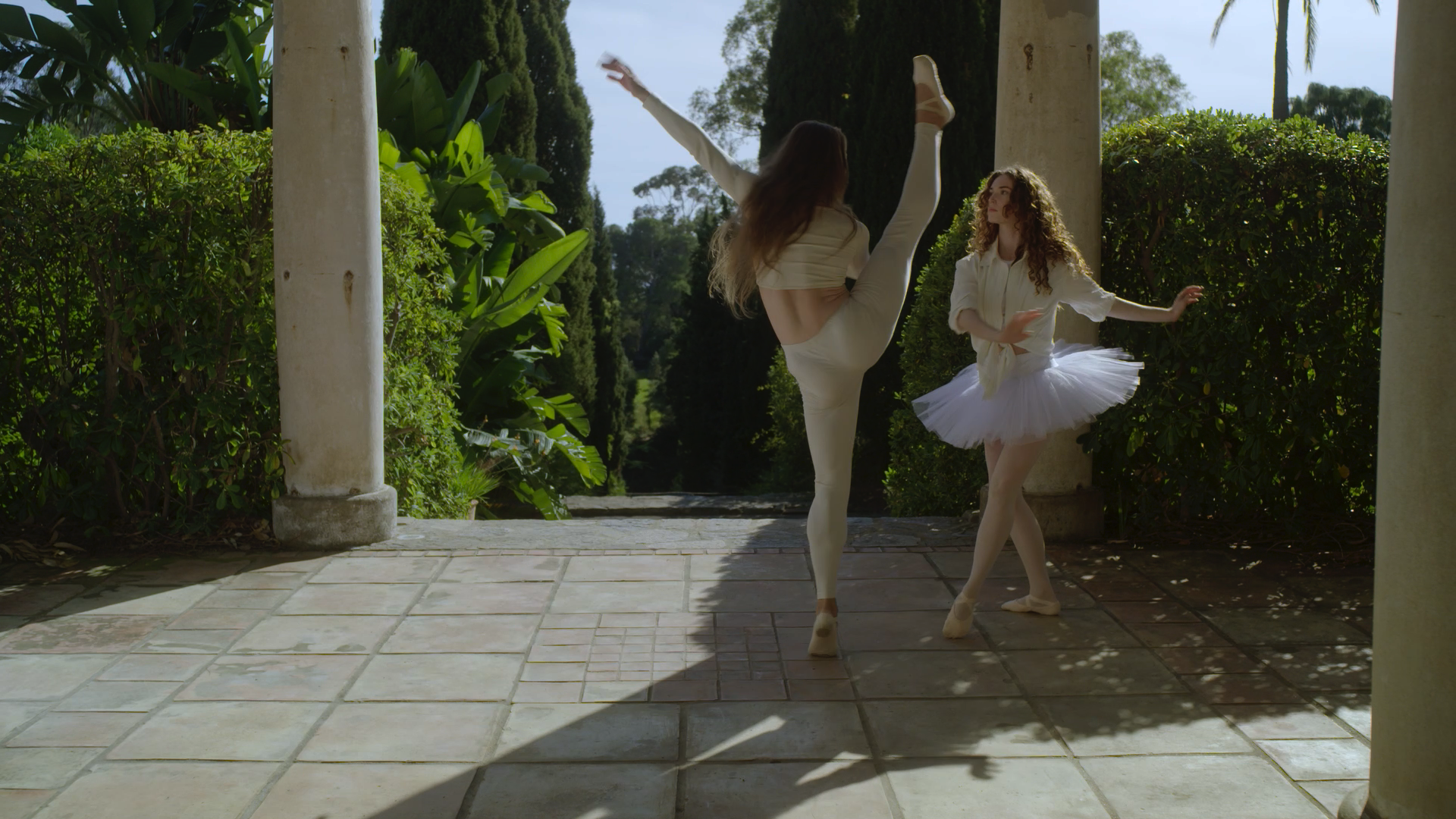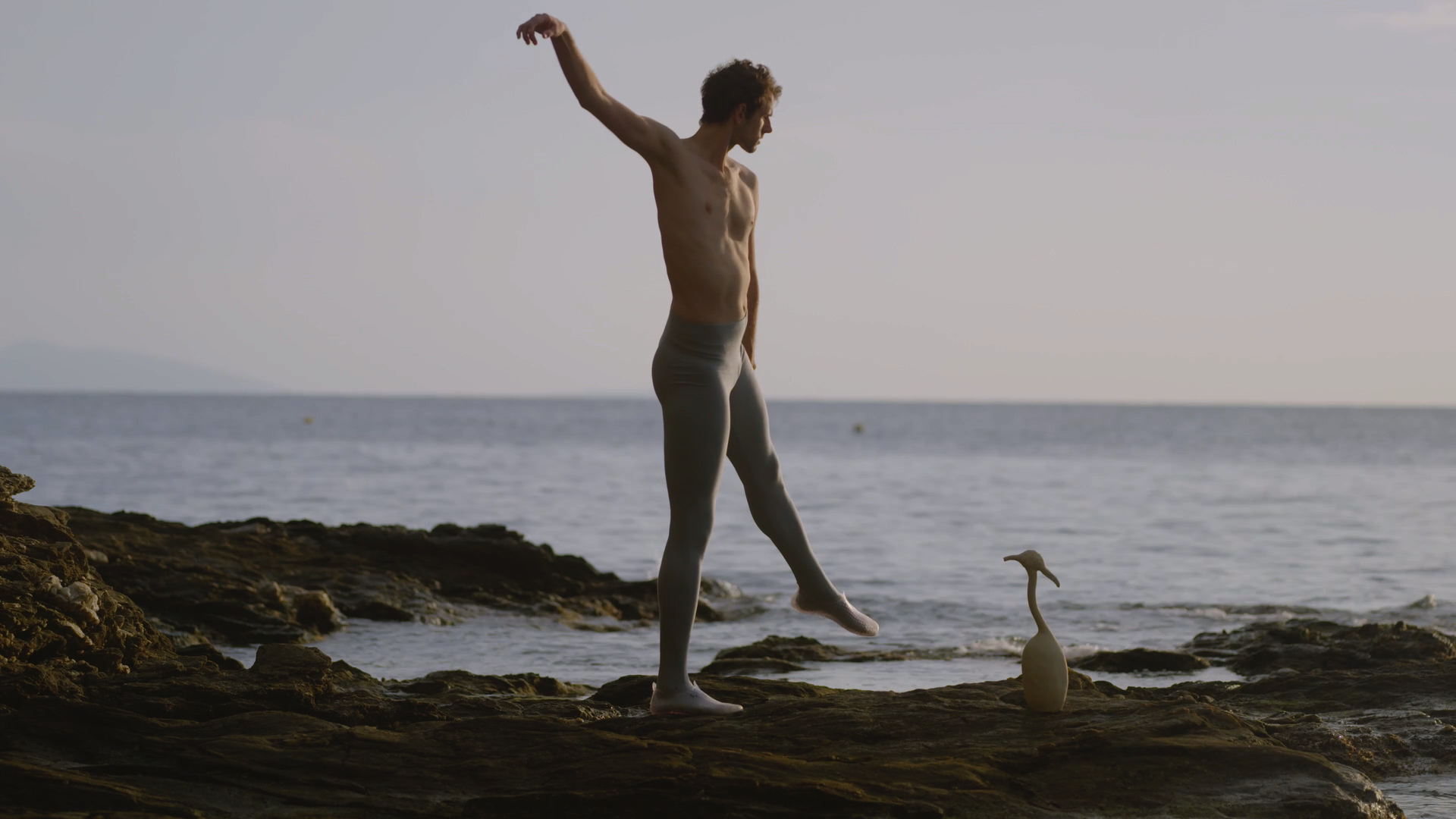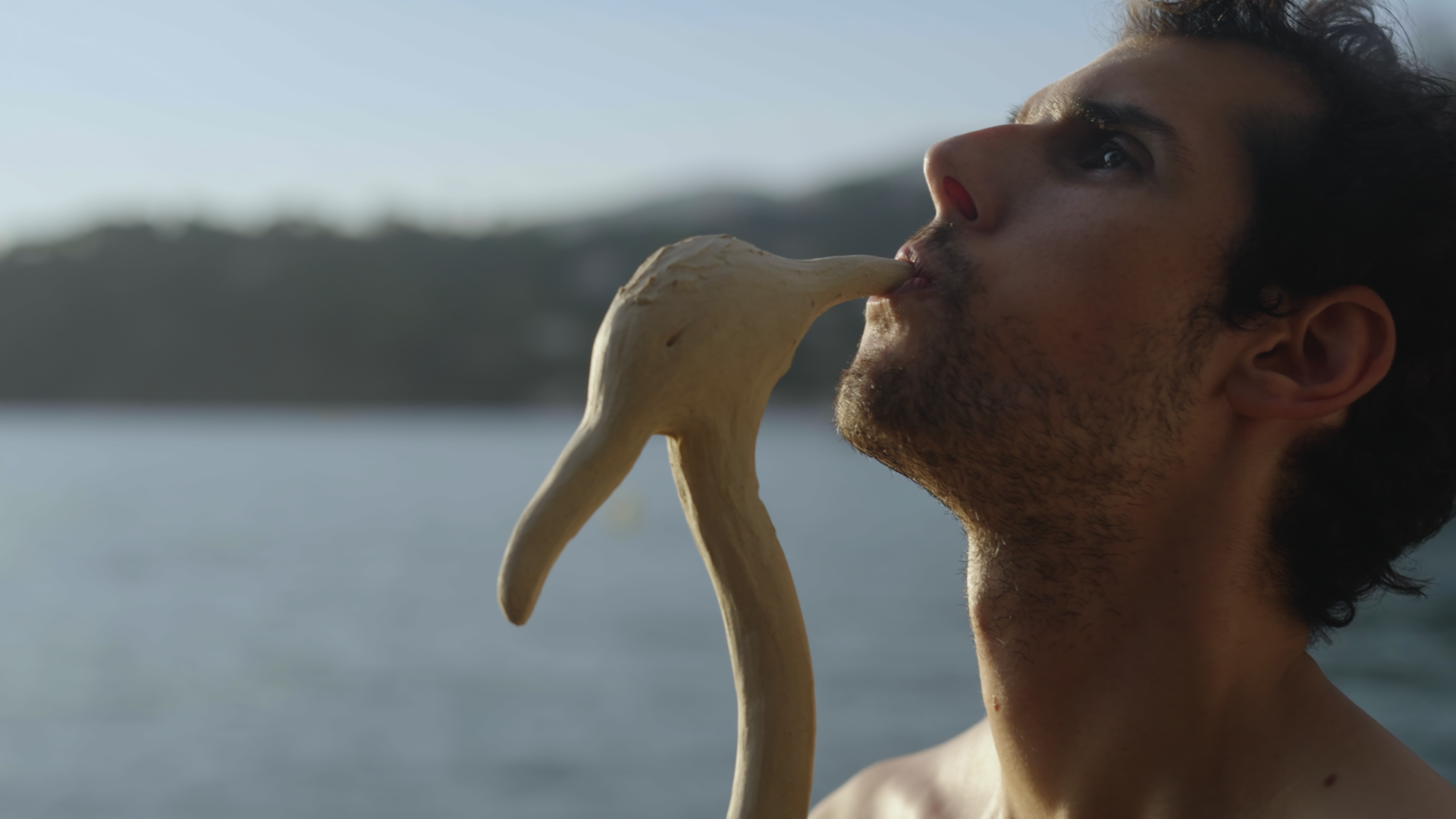
Katia Kameli, The canticle of the birds, variation, 2023. Film UHD, 25’. Courtesy of the Artist. Videostills

Katia Kameli, The canticle of the birds, variation, 2023. Film UHD, 25’. Courtesy of the Artist. Videostills

Katia Kameli, The canticle of the birds, variation, 2023. Film UHD, 25’. Courtesy of the Artist. Videostills

Katia Kameli, Huppe, 2022. Sound sculpture, chromatic ocarina, tablature in C attached, sandstone grog. Courtesy of the Artist. Photo by Tiberio Sorvillo
Katia Kameli
1973, France
EN The work of French-Algerian artist Katia Kameli is closely linked to her own origins and the different cultures that construct her identity. Starting from personal experience, her works explore the “in-between” zones where traditional culture meets contemporary culture, focusing mainly on territories such asAfrica, the Middle East and the Mediterranean. Through photography, film and installation, the artist works as a translator, mixing languages and identities and giving birth to a new hybrid language. The work on view at Pontives, Huppe(2022), is a sound sculpture that is part of a choral sculptural group, produced on the occasion of the exhibition at La Criée Contemporary Art Center, entitled Le Cantique des oiseaux(The Canticle of the Birds). The exhibition takes its title from the most recent translation (edited by Leili Anvar) of the poem by the 12th-century Persian author Farîd-ud Dîn ‘Attâr. The text recounts the journey of thousand birds led by the wisest among them, the hoopoe (hodhod in Persian) in search of Simorgh, a mythological creature of Persian tradition who was said to live at the peak of mount Qaf, the mythical mountain. Along this journey throughseven valleys, which is nothing but a metaphor for life, some birds abandon their companions, and only about 30 reach the end of the journey and ultimately realizethat Simorgh is their own reflection. Kameli translates the words of the poeminto a flock of bird ceramics of different sizes, each characterized by its own melody, which the artist has brought together in a chorus that can symbolize the importance of self-discovery and collective action.
IT Il lavoro dell’artista franco-algerina Katia Kameli è strettamente legato alle proprie origini e alle diverse culture che costruiscono la sua identità. A partire dall’esperienza personale le sue opere esplorano le zone “intermedie”in cui la cultura tradizionale incontra quella contemporanea, concentrandosi soprattutto su territori come Africa, Medio Oriente e Mediterraneo. Attraverso suono, video e fotografia l’artista lavora come una traduttrice, mescolando linguaggi e identità e dando vita a una nuova lingua ibrida. L’opera in mostra a Pontives, Huppe(2022), è una scultura sonora che fa parte di un gruppo scultoreo corale, prodotto in occasione della mostra presso il Centro d’arte contemporanea La Criée, intitolata Le Cantique des oiseaux(Il cantico degli uccelli). La mostra prende il titolo dalla più recente traduzione (a cura di Leili Anvar) del poema dell’autore persiano Farîdud-Dîn ‘Attâr, risalente al dodicesimo secolo. Il testo racconta il viaggio di uno stormo di uccelli diversi guidato dal più saggio fra loro, l’upupa (hodhod in persiano) alla ricerca di Simorgh, una creatura mitologica della tradizione persiana che si dicevavivesse sulla cima del monte Qaf, la montagna mitica. Lungo questo tragitto attraverso sette valli, che altro non è che una metafora della vita, alcuni uccelliabbandonano i compagni e solo una trentina giungono alla fine del viaggio esi rendono conto che Simorgh è il loro stesso riflesso. Kameli traduce le parole del poema in uno stormo di uccelli in ceramica di diverso formato, ognuna caratterizzata da una propria melodia, che l’artista ha riunito in un coro che può simboleggiare l’importanza della scoperta di sé e dell’azione collettiva.
DE Die Arbeit der französisch-algerischen Künstlerin Katia Kameli ist engmit ihrer eigenen Herkunft und den verschiedenen Kulturen verbunden, die ihre Identität ausmachen. Ausgehend von persönlichen Erfahrungen erforschtsie in ihren Werken die “Zwischenbereiche”, in denen die traditionelle auf diezeitgenössische Kultur trifft, wobei sie sich vor allem auf Gebiete wie Afrika, denNahen Osten und den Mittelmeerraum konzentriert. Durch Sound, Video undFotografie arbeitet die Künstlerin wie eine Übersetzerin, indem sie Sprachen und Identitäten vermischt und eine neue hybride Ausdrucksweise schafft. Das in Pontives gezeigte Werk, Huppe(2022), ist eine Klangskulptur, die Teil einer choralen Skulpturengruppe ist, die anlässlich der Ausstellung im Zentrum für zeitgenössische Kunst La Criée mit dem TitelLe Cantique des oiseaux(DerGesang der Vögel) entstand. Der Titel der Ausstellung stammt aus der jüngstenÜbersetzung (herausgegeben von Leili Anvar) des Gedichts des persischen Autors Farîd-ud-Dîn ‘Attâr aus dem 12. Jahrhundert. Der Text erzählt von der Reise eines Schwarms verschiedener Vögel, angeführt von dem weisesten unter ihnen, dem Wiedehopf (persisch: hodhod), auf der Suche nach Simorgh, einem mythologischenWesen der persischen Tradition, das auf dem Gipfel des mythischen BergesQaf leben soll. Auf dieser Reise durch sieben Täler, die nichts anderes als eineMetapher für das Leben ist, lassen einige der Vögel ihre Gefährten im Stich, und nur etwa dreißig erreichen das Ende der Reise und erkennen, dass Simorgh ihr eigenes Spiegelbild ist. Kameli übersetzt den Text des Gedichts in eine Schar vonKeramikvögeln unterschiedlicher Größe, von denen jeder eine eigene Melodie erzeugt, welche von der Künstlerin zu einem Chor zusammengefügt wird, der wiederum für Selbstfindung und kollektives Handeln stehen kann.
LA L lëur dl’artista franzesc-tunisina Katia Kameli ie lià dassënn a siurigines y ala cultures defrëntes che fej ora si identità. A pië via da si esperienzespersuneles ti va si opres do ai raions “danterite” ulache la cultura tradizionelaanconta chëla cuntemporana y la se cunzentrea dantaldut sun i raions dl’Africa,dl Urient daujin y dl Mediteran. Tres l sonn, video y fotografies lëura l’artistacoche na tradutëura y mescëida rujenedes y identiteies y ti dà vita a na rujenedanueva y ibrida. L’opra metuda ora a Pontives,Huppe(2022), ie na sculturache cianta y la fej pert de n cor de scultures, metù adum n ucajion dla mostratl Centro d’arte contemporanea La Criée, dal titulLe Cantique des oiseaux(La ciantia de lauda di uciei). La mostra tol l inuem dala traduzion plu nueva(a cura de Leili Anvar) dl poem dl autëur persian Farîd-ud-Dîn ‘Attâr che vazeruch al dodescejim secul. L test conta de n viac de na turba de uciei defrëncmeneda dal plu acort danter ëi, dal gialët de mei (hodhod in persiano) y cheva a crì Simorgh, na creatura mitologica tla tradizion persiana de chëla che ndij che la vivova sun l crëp Qaf, l crëp mitich. Ntan chësc viac tres set valedesche ne ie nia auter che na metafora dla vita, lascia n valgun uciei si cumpaniesy mé n trënta ruva nchin ala fin dl viac y se rënd cont che Simorgh ie l reflesde d’ëi nstësc. Kameli fej la traduzion dla paroles dl poem te na turba de ucieide ceramica de formac defrënc, uniun caraterisà da si meludia che l’artista àpurtà adum te n cor che possa vester l simbol dla scuvierta de sé nstës y dl’azion deberieda.